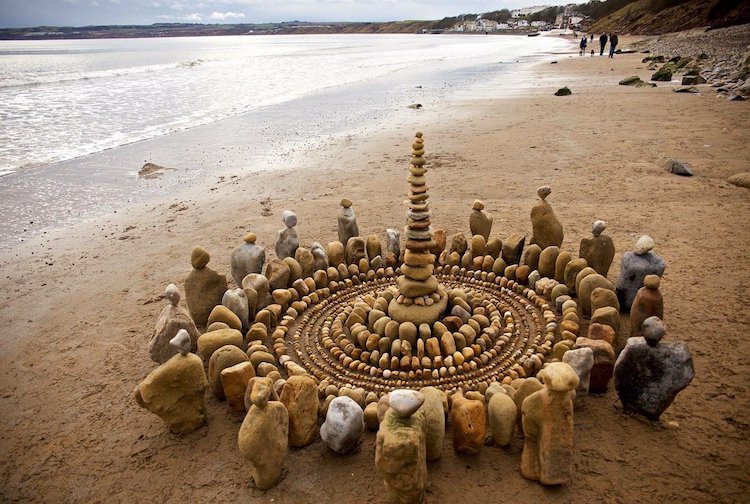Unveiling the Mystique of Ephemeral Art: Creating Beauty Meant to Disappear
Delve into the world of ephemeral art and discover the enchanting beauty of creations destined to fade away. Explore the significance, techniques, and impact of ephemeral art in this insightful article

Introduction

Ephemeral art, with its transient allure, captivates hearts and minds with its impermanent beauty. This article delves deep into the realm of ephemeral art, exploring its significance, techniques, and impact on contemporary artistry.
Ephemeral Art: Creating Beauty Meant to Disappear
Ephemeral art encompasses a diverse array of artistic expressions designed to be transient in nature. From fleeting performances to temporary installations, this form of art challenges the conventional notion of permanence, inviting viewers to contemplate the fleeting nature of existence.
Understanding the Significance of Ephemeral Art
Ephemeral art serves as a poignant reminder of the impermanence of life, encouraging audiences to embrace the present moment. By highlighting the transient nature of beauty, ephemeral art invites viewers to cultivate a deeper appreciation for the fleeting moments that comprise the human experience.
Exploring the History of Ephemeral Art
The roots of ephemeral art can be traced back through history, with ancient civilizations engaging in temporary artistic expressions as part of rituals and ceremonies. Over time, ephemeral art has evolved, manifesting in various forms ranging from performance art to environmental installations.
Types of Ephemeral Art
Ephemeral art encompasses a diverse range of artistic genres, each with its own unique characteristics and methods of expression. Some common types of ephemeral art include performance art, land art, installation art, street art, and environmental art.
Techniques Used in Ephemeral Art
Ephemeral artists employ a variety of techniques to create their transient masterpieces. From using biodegradable materials to harnessing the power of natural elements, these artists push the boundaries of creativity while embracing the ephemeral nature of their work.
The Impact of Ephemeral Art on Contemporary Culture
In recent years, ephemeral art has gained prominence in the contemporary art world, challenging traditional notions of artistic permanence. Through its transient nature, ephemeral art sparks conversations about impermanence, environmental sustainability, and the fleeting nature of beauty.
Contemporary Ephemeral Artists
A new wave of ephemeral artists has emerged, pushing the boundaries of artistic expression with their innovative creations. From large-scale installations to interactive digital experiences, these artists continue to redefine the landscape of contemporary artistry.
Documenting Ephemeral Art
While ephemeral art may be transient in nature, documenting these temporary creations is essential for preserving their legacy. Through photography, video, and written accounts, the essence of ephemeral art can be shared and appreciated long after the physical artwork has disappeared.
Preserving the Legacy of Ephemeral Art
Despite its transient nature, ephemeral art leaves a lasting impact on the cultural landscape. By documenting and sharing these transient creations, we ensure that their significance is recognized and celebrated for generations to come.
Challenges Faced by Ephemeral Artists
Ephemeral artists face unique challenges in their pursuit of creative expression. From logistical hurdles to environmental considerations, these artists must navigate various obstacles to bring their transient visions to life.
Conclusion
In conclusion, ephemeral art offers a captivating glimpse into the transient nature of existence. By embracing impermanence, both artists and audiences are invited to appreciate the beauty that lies in the fleeting moments of life.
FAQs
- What makes ephemeral art unique?
- Ephemeral art challenges traditional notions of permanence, inviting viewers to contemplate the transient nature of beauty and existence.
- How do ephemeral artists address environmental concerns?
- Many ephemeral artists prioritize sustainability by using biodegradable materials and minimizing their environmental impact.
- Can ephemeral art be preserved for future generations?
- While the physical manifestations of ephemeral art may disappear, documenting and sharing these creations ensures that their legacy lives on.
- What are some examples of famous ephemeral art installations?
- Examples include Christo and Jeanne-Claude's "The Gates" in Central Park and Andy Goldsworthy's ephemeral sculptures made from natural materials.
- How can I experience ephemeral art firsthand?
- Keep an eye out for temporary installations and performances in your local area, or visit galleries and museums that feature ephemeral art exhibitions.
- What is the significance of impermanence in ephemeral art?
- Impermanence serves as a central theme in ephemeral art, inviting viewers to contemplate the fleeting nature of beauty and existence.